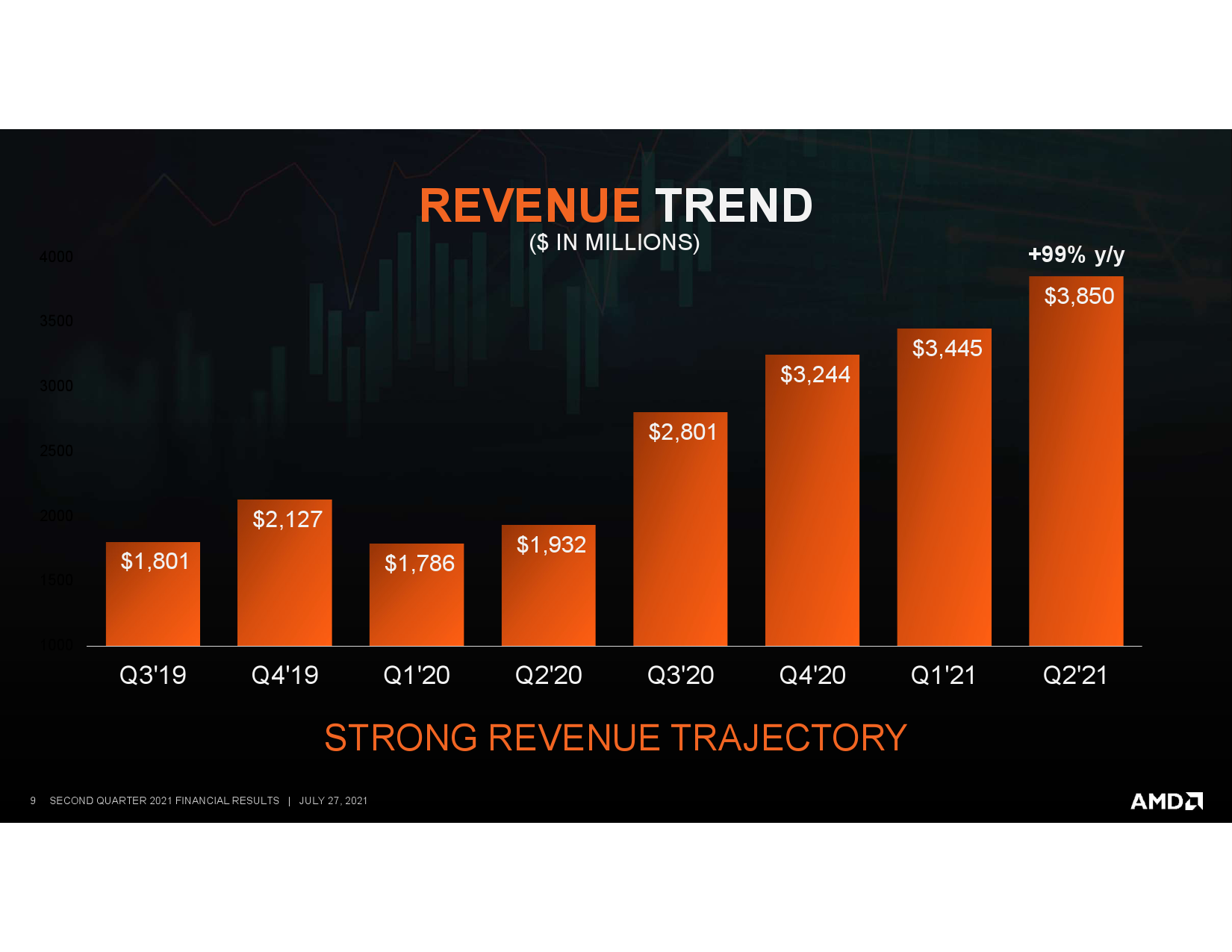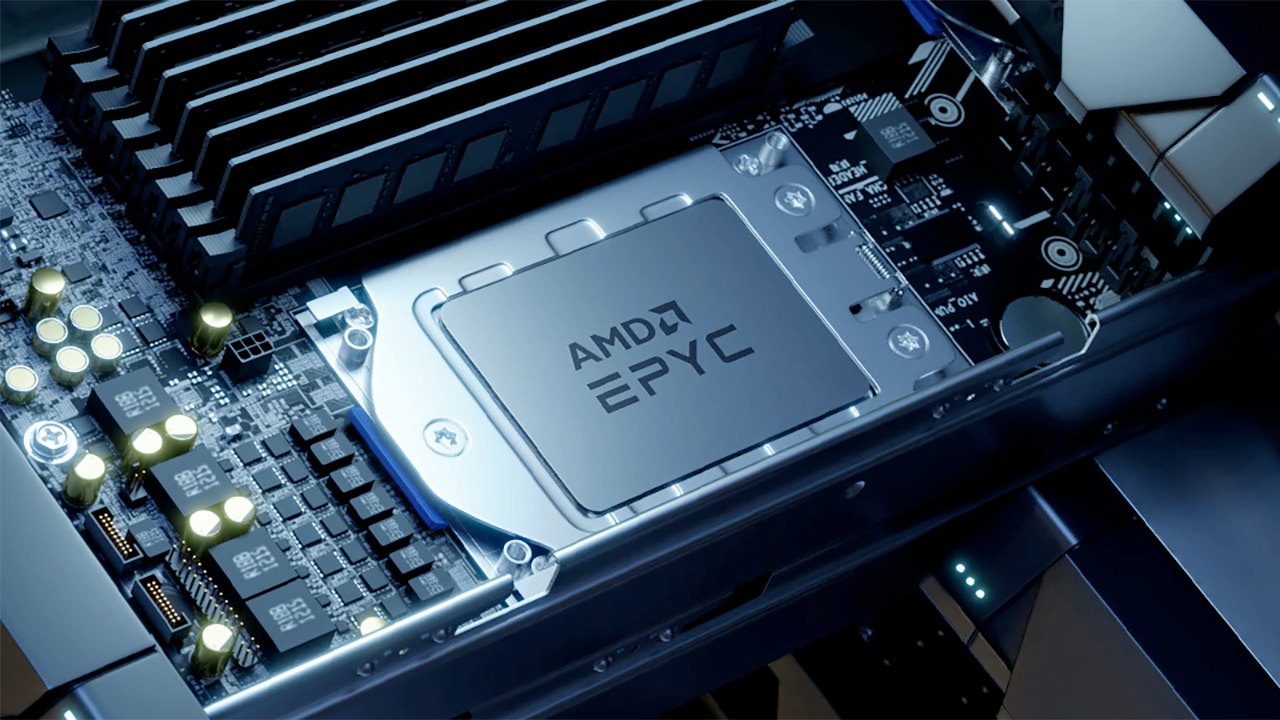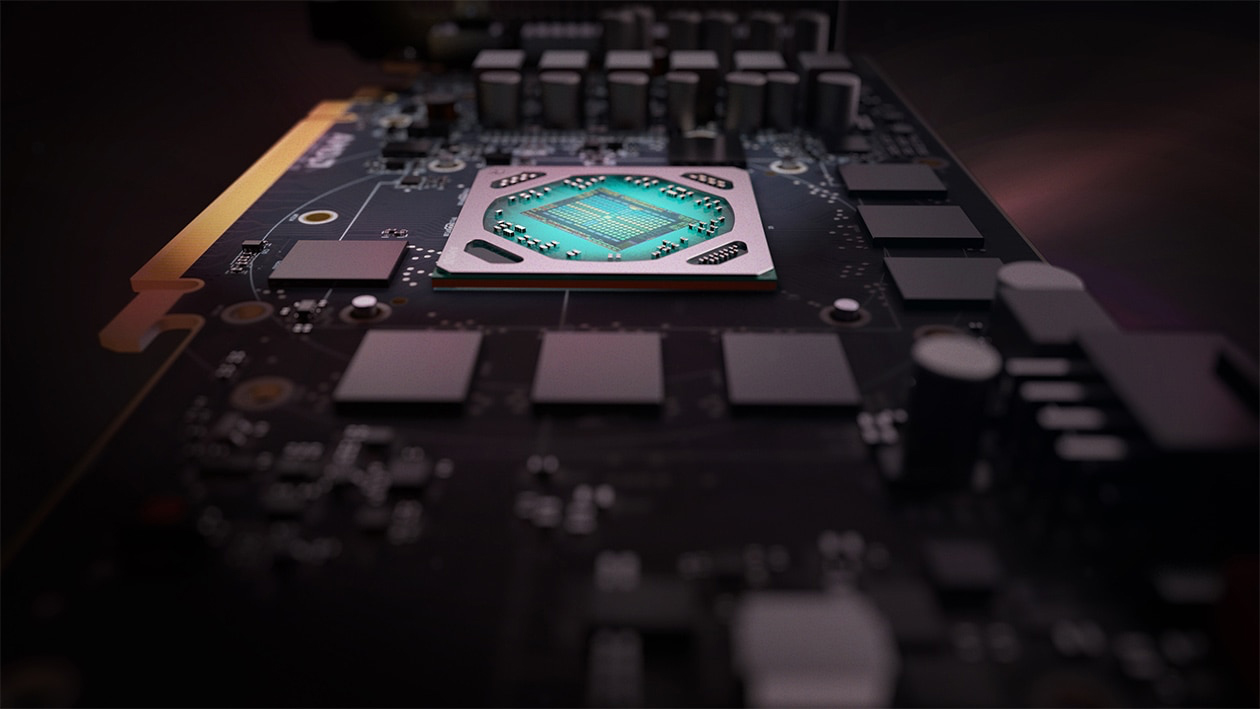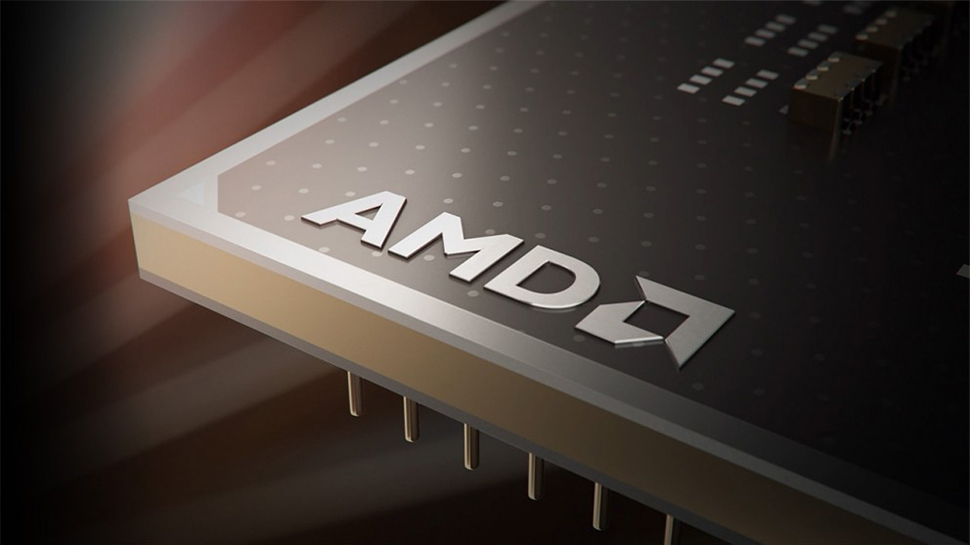AMD: Confident in Our Suppliers, Set to Grow in 2022
AMD revenues have been growing steadily in the past few years. In 2020, the company posted its all-time record revenue of $9.763 billion and, for this year, it recently guided a whopping 60% increase to around $15.5 billion, a goal that is particularly hard to hit amid a chip-supply crisis. Yet, AMD is confident that it will achieve its targets this year and in the coming years because of improved supply, growing demand for server and HPC-grade hardware, and a focus on premium models.
Continuous Growth
"We believe that we can continue [this revenue growth], both with the customers on the demand side and also supply [side] with our foundry partners, substrate suppliers, and ATMP [assembly, testing, marking, and packaging] capacity and feel that there is significant room for us to grow out to 2022 and 2023," said Devinder Kumar, chief financial officer of AMD, at Deutsche Bank Technology Conference 2021 (via SeekingAlpha).

So far this year, AMD's sales have been very strong. The company earned $7.295 billion in the first two quarters of the year and is on-track to hit the goal of growing its revenue by 60% year-over-year.
To hit its financial targets this year, AMD had to prioritize manufacturing of products it had committed to supply as well as high-margin models, which sometimes means giving up unit share. In fact, AMD gained unit and revenue share in servers and mobile client PCs, but its unit share in desktops dropped in Q2 2021 (even though it has some of the best CPUs these days) as the company focused its production on high-margin server CPUs as well as on mobile processors (which it had committed to supply to PC makers in advance). Meanwhile, the company's unit share on the market of discrete GPUs for desktop and laptop PCs dropped to a multi-year low in Q2 2021.
Datacenters & HPC
"The first priority is if we have made a commitment to our customer, we want to make sure that we can supply the parts to the customers," said Kumar. "The second thing you look at from an overall standpoint of demand versus supply, […] datacenter is a very high priority […]. Then the PC business, in particular with the higher end of the stack, we want to make sure that we can maintain and continue to grow the business in that area."

When it comes to datacenters and servers, AMD is particularly competitive with its 2nd and 3rd Generation EPYC processors codenamed Rome and Milan that feature up to 64 cores, something that Intel cannot offer. To this point, AMD's EPYC CPUs have been particularly successful with OEMs supplying to enterprises. But as operators of cloud datacenters are ramping up adoption of EPYC chips, the company has to meet additional demand for its server processors.
Speaking of EPYCs, it is impossible to omit another major market that they are designed to address: supercomputers. AMD has won and fulfilled multiple supercomputer contracts with its EPYC processors, yet its main design wins for Oak Ridge Leadership Computing Facility's Frontier 1.5 ExaFLOPS supercomputer as well as for Lawrence Livermore National Laboratory's El Capitan 2+ ExaFLOPS supercomputer are yet to be delivered.
Get Tom's Hardware's best news and in-depth reviews, straight to your inbox.
Both Frontier and El Capitan are powered by AMD's EPYC processors as well as the company's Instinct compute GPUs based on the CDNA architecture developed specifically for the HPC space. Being exascale systems, they use loads of high-end components and bring some huge money to technology companies. The Frontier machine alone will earn AMD, HPE, and others around $600 million.
GPUs Are for Gamers, Not for Miners
Demand for discrete GPUs for desktops and laptops increased significantly in the recent quarters as people now spend more time at home, but AMD could not really capitalize on this in terms of unit shipments.
Obviously, since demand is high, the company could increase the prices of its GPUs and sell more high-end models (such as those on our best graphics card list) than usual. However, AMD also ran into controversy.

A recent Steam Hardware Survey revealed that there were 11 times more gamers using Nvidia's GeForce RTX 30-series graphics cards than there were gamers using AMD's latest Radeon RX 6000-series boards. Based on data from Jon Peddie Research, Nvidia outsold AMD 9:2 in Q2 2021, so after reviewing data from both sources, some observers accused AMD of selling its Radeon GPUs to large mining farms rather than sending them to the retail channel after seeing a video at Reddit.
AMD's CFO denied the accusations and said that demand from miners was negligible. He also indicated that while AMD did not prioritize its GPU customers (well, at least not unless it had committed to supply them to a client in advance), the Radeon GPUs were for gamers, not for miners.
"First, crypto is negligible, that is not a priority for us," said Kumar. "We do not prioritize our product or make them for the crypto folks is more for the gamers and that's our high priority from that standpoint. What has driven the [GPU revenue] growth, as you know, we [have] the Radeon RX 6000-series high-end GPUs [they are] very competitive and that is driving the growth in the GPU space."
The discrete GPU business largely relies on massive R&D spending, a halo effect produced by top-of-the-range graphics cards, presence in retail with a wide family of offerings and marketing investments. Several years ago, AMD could not afford major investments in its graphics business and prioritized its CPU business as it had a clear roadmap with visible returns. This is the reason why Nvidia can significantly outsell AMD today.
What would be interesting to know is whether AMD is investing enough in its GPU business now and whether this will be enough to capture a sizeable market share from Nvidia several years down the road.
Focus on Revenue Share
Being constrained on wafer processing, substrate supply, and ATMP (assembly, testing, marking, and packaging) capacity levels, AMD realistically cannot significantly increase its unit shipments and win unit share from Intel, particularly on the client side of the market. Therefore, AMD has to focus on revenue share by selling server CPUs as well as premium products instead of cheaper SKUs.

"We are very focused on revenue share to go ahead and continue growing that because we believe even at the level that we are in right now, we have significantly lower revenue share in terms of where we are going to get to from a revenue share gain in particular with the premium products and the comparative products that we're introducing," said Kumar.
Summary
AMD is quite optimistic about its mid-term future as demand for its products is growing across all segments of the market, including client PCs, datacenters, and supercomputers. In fact, for the first time throughout its history, AMD has very competitive (if not the best CPUs) processors for virtually all major applications. When combined with generally high demand for computers, it is not surprising that the company cannot meet 100% of demand that it faces.
Given growing demand for everything that computes, AMD's main challenge in the coming quarters and years will hardly be to land additional orders to sell as many parts as possible, but to produce enough chips to meet the growing demand. In the meantime, AMD will focus on increasing its revenue share by selling more expensive components.

Anton Shilov is a contributing writer at Tom’s Hardware. Over the past couple of decades, he has covered everything from CPUs and GPUs to supercomputers and from modern process technologies and latest fab tools to high-tech industry trends.
-
lastguytom AMD has screwed the people who wanted to just upgrade their GPUs, Tom's Hard Article on the 6700 mining card Answers the Question. AMD is using its wafflers for mining cards for minor instead of GPUs for gamers. (Tom's Hardware deleted my last comment, they must hate the truth)Reply -
VforV I don't like this situation either, but I believe AMD is doing the best they can to grow faster, considering their size, while fighting 2 Goliath size opponents: Intel and nvidia.Reply
People need to realize that AMD still is much smaller than any of those 2 companies and they also fight against them both.
They had 2 options of doing things:As they did before the Zen success and 1st Zen, which is best bang for buck and the budget option for everyone, but risk losing on the long run, because growth would be minimal.
As they are doing now, capitalizing on the best performance they ever had in both CPUs and GPUs, by charging a lot more, even premium, so they can grow and get bigger faster to be able to fight those 2 giants.AMD cannot be the underdog, the smaller company and have the best products and the best prices and also be able to fight Intel and nvidia at the same time. It's unreasonable to demand that.
If you ask that from AMD, you should also ask the same from Intel and nvidia, and every other tech company for that matter. Guess why you don't see anyone being able to pull that trick? Because it's impossible, you can't have all positives and no negatives in one company.
People need to think realistically and not have fantasies that will never happen. -
waltc3 Excellent article!--it proves, as I have always believed, that miners and bots were not the problem with the GPU production shortages--so it's either yields or FAB space (or both) that has been the major factor in the RX-6k GPU shortages of the last eight months. The AMD store (US) has been fully stocked with Zen3 CPUs for many weeks, now, all selling at MSRP, so looks like the materials shortages are a thing of the past. But at this rate I might be waiting on RDNA3 for my next GPU!Reply
Steam surveys don't count for much, as we've noted before--but people still keep pretending Steam survey percentages from month to month mean something substantial. Jon Peddie always does estimates--he does not get his numbers from either AMD or nVidia--because they do not give them out--and Peddie has a habit of mixing his discrete GPU sales estimates in with his APU/IGP sales estimates, etc. And so it looks as if AMD is more or less experiencing major growing pains! The company is growing by leaps and bounds with no end in sight! Glad to see it--but I want my GPU, AMD...;) -
Alvar "Miles" Udell AMD has been incredibly lucky ever since the first generation Ryzen chips hit shelves in that Intel has been stymied by fab problems, and soon after the cryptocurrency explosion meant every GPU they could make was able to be sold.Reply
Let Intel get back into form and crypto to crash and we will see how many more times they will have to double cross customers in order to keep shifting products.
And yes, I am still extremely sore about being an X370 owner... -
Unolocogringo AMD is limited only by the wafer starts they can get from TSMC.Reply
They already have obligations for Xbox and PS consoles, contracts for a few super computers.
Their CPUs for server, workstation kill Intel chips . Their high end desktop CPUs equal or beat Intel in performance. And all use a lot less power than Intel.
Yields at TSMC are very good. There are not many low quality chips being produced.
They would be stupid to disable good cores to make lower end SKUs at this time.
We will eventually get limited quantity lower end chips from lower quality binned chips.
Because of AMD's success Intel chips are at historical low prices for their high end SKUs.
Intel has become the budget gamer chip. -
lastguytom Reply
I reached 64 yrs this year. I understand, AMD got to reach financials goal, but they are sacrificing the people like me WHO supported them for years. Furthermore, I have guys who mine, they told me if you want to get AMD cards, go to this so-called mining GPU seller buy it with cryptocurrency.VforV said:I don't like this situation either, but I believe AMD is doing the best they can to grow faster, considering their size, while fighting 2 Goliath size opponents: Intel and Nvidia.
People need to realize that AMD still is much smaller than any of those 2 companies, and they also fight against them both.
They had 2 options of doing things:As they did before the Zen success and 1st Zen, which is the best bang for buck and the budget option for everyone, but risk losing in the long run, because growth would be minimal.
As they are doing now, capitalizing on the best performance they ever had in both CPUs and GPUs, by charging a lot more, even premium, so they can grow and get bigger faster to be able to fight those 2 giants.AMD cannot be the underdog, the smaller company and have the best products and the best prices and also be able to fight Intel and Nvidia at the same time. It's unreasonable to demand that.
If you ask that from AMD, you should also ask the same from Intel and Nvidia, and every other tech company for that matter. Guess why you don't see anyone being able to pull that trick? Because it's impossible, you can't have all positives and no negatives in one company.
People need to think realistically and not have fantasies that will never happen.
(that is another story). Let's say I got GPU cards for my friend build but i had to go Nvidia to get his builds done, i told him i was sorry, but at least has a pc for him and his son are done. AMD sacrifice profit for market share. My friend's son is only going to remember that his 1st PC used Nvidia, and that will carry over to his friend's and his children. AMD made their financial goals, but sacrificed the future of their Radeon division. Intel is entering the GPU arena AMD should not sacrifice rep for a few bucks -
VforV Reply
I understand your pain, but like I said above, if they were to go the popular cheaper way, they would be dead financially in 5 years...lastguytom said:I reached 64 yrs this year. I understand, AMD got to reach financials goal, but they are sacrificing the people like me WHO supported them for years. Furthermore, I have guys who mine, they told me if you want to get AMD cards, go to this so-called mining GPU seller buy it with cryptocurrency.
(that is another story). Let's say I got GPU cards for my friend build but i had to go Nvidia to get his builds done, i told him i was sorry, but at least has a pc for him and his son are done. AMD sacrifice profit for market share. My friend's son is only going to remember that his 1st PC used Nvidia, and that will carry over to his friend's and his children. AMD made their financial goals, but sacrificed the future of their Radeon division. Intel is entering the GPU arena AMD should not sacrifice rep for a few bucks
They had to go this way to not only keep fighting, but to get bigger and stronger so they can fight better vs 2 giants.
You would have cheered for great prices now, but would you have liked AMD to be bankrupt or insignificant in 5 years time? Would that be better? We had that happen in the past already.
I don't want that to happen again, AMD does not want it either, so we got this compromise option instead. -
waltc3 ReplyAlvar Miles Udell said:AMD has been incredibly lucky ever since the first generation Ryzen chips hit shelves in that Intel has been stymied by fab problems, and soon after the cryptocurrency explosion meant every GPU they could make was able to be sold.
Let Intel get back into form and crypto to crash and we will see how many more times they will have to double cross customers in order to keep shifting products.
And yes, I am still extremely sore about being an X370 owner...
No luck involved--while AMD was burning the midnight oil for five years designing Ryzen & EPYC, etc., Intel was lazing around doing business as usual, selling rewarmed architectures and raking in the dough, secure in the belief that it had no high-end competition in the x86 compatible CPU markets and never would. And AMD zoomed right past them like they were sitting still--which Intel was literally doing, actually. No luck involved--not even close. AMD shot right past Intel on one-tenth of the R&D expenditure. Intel didn't have any FAB problems until suddenly it couldn't keep up with AMD/TSMC because it was sitting still there, too. Until then, Intel had thought its FABs were just fine. It's always amusing to hear people say they think AMD was just "lucky"--like the company found the designs for Ryzen, et al, at the bottom of a Cracker Jack box--or won them in a lottery, etc...;)
Conversely, Intel wasn't "unlucky," either...AMD passed them by (again) because the company was sitting still instead of doing what AMD was doing on a fraction of the resources--burning the midnight oil for years before the first Ryzen shipped. I'm not even sure Intel knows how to do that...I'm an x370, x470, x570 owner who is very happy with his 1600/3600X/3900X. Good for AMD--they deserve their success and more. And luck had nothing to do with it far as I can see.